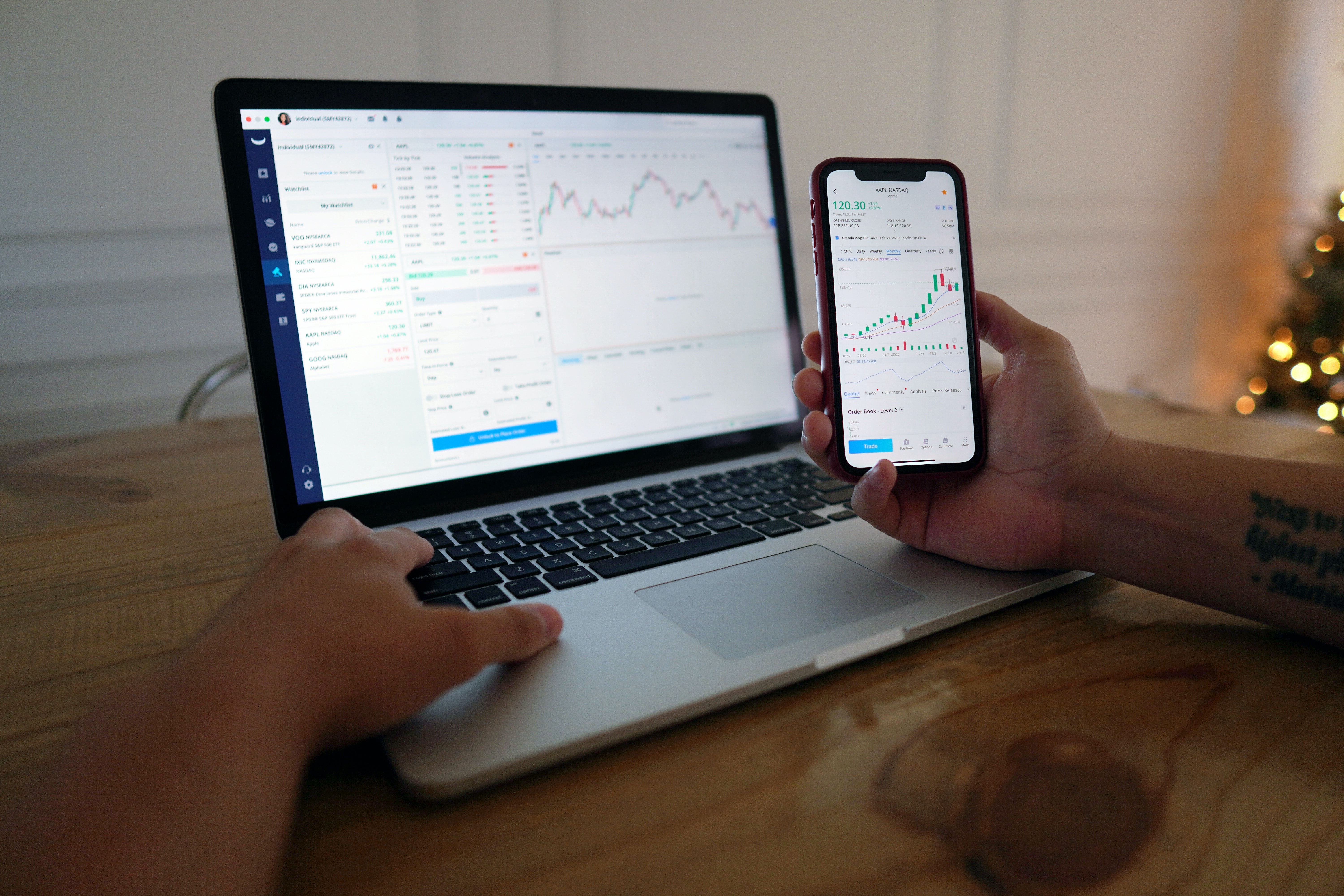Summary
This article will focus on how to open a brokerage account, so you can start investing.
As a refresher, here are the three steps to get your first million:
- Get a good-paying job
- Save half your money for 10-15 years
- Buy good companies at great prices to start growing your savings
In 12-15 years, you should have your first million
This article focuses on the last step–investing–after you’ve secured a good income, and you’ve begun saving. How exactly do you get started investing?
- Open a brokerage account
- Deposit money into account
- Pick a company or fund, and buy it
1. Open a brokerage account
The first step is opening a brokerage account. A brokerage account is just like a bank account, except you can use to the cash in the account to buy companies and funds (e.g. exchange-traded funds or mutual funds).
If you’re in Canada like me, I’d recommend Questrade. They make it really simple to open an account, with minimal printing and mailing of paperwork. Actually, these days it might be 100% online so it could hardly be easier.
Alternatively, every big bank has its own “discount brokerage” account, so if you want to keep it simple and you’re with, say, Royal Bank of Canada (RBC), you could open an account with RBC Direct Investing.
2. Deposit money into account
Next, you have to get money into the account. Your brokerage will outline the steps, if you Google something like “how to deposit money into Questrade brokerage account”.
If you’re using the same bank as your chequing account, you can just transfer the money in. If you’re using another company for your brokerage account, like Questrade, you just setup a bill payment, exactly like paying your credit card bill.
3. Pick a company or fund, and buy it
Now for the more challenging, and more interesting part: choosing companies to buy. I’ll have lots more to say about this later when I talk about “value investing”, but for now, I’d recommend using Yahoo Finance to check company (stock) prices, and quickly analyze their financial info (e.g. income statement, cash flow statement, and balance sheet, as well as popular financial ratios like the price/earnings ratio).
For example, let’s check out the holding company of the most famous (and probably best ever) value investor of all time, Warren Buffett. You can buy a small part of his company, Berkshire Hathaway Inc, with the stock ticker BRK-B. Check it out on Yahoo Finance.

In the above image, I’ve highlighted that one share of Berkshire Hathaway cost $300.60 USD on Friday, July 29, 2022, as of ~4:00 pm Eastern time. Most markets are open from 9am until 4pm Eastern time, and I’m writing this on the following Saturday, so that’s the last available price at which this stock traded hands (i.e. someone bought it from someone else).
I’ve also highlighted the very important “PE Ratio” or price/earnings ratio. This is the first and most important valuation ratio. This is how much money you’re paying for $1 per share in annual net income. Lower numbers are always better with this ratio. The reason we’re investing is to own the rights to these companies’ net income, so we want to buy the most income at the lowest cost.
This article is about getting started investing, not about picking companies/funds, so I’ll leave it at that. It’s hard to go wrong buying shares of Berkshire Hathaway.
Note: Berkshire Hathaway is priced in USD, so you’ll have to convert your cash/currency into USD before buying it.
If you’re looking for a relatively safe Canadian company to buy in Canadian dollars, perhaps consider a company like Enbridge, for example. It’s North America’s largest infrastructure company.

Dividends and Capital Gains
Dividends
Notice that Enbridge pays a dividend of $3.44 per share each year (currently), which is 5.98% of the share price (its “dividend yield”). Enbridge was trading around $57 on Friday, but suppose you could buy it for $50, as you could in December 2021. If you bought two shares at $50 each, you’d receive $3.44 per share or $6.88 in dividends each year. If you bought those shares for $50 each, you’d be earning a 6.88% dividend yield on your money, pretty close to our conservative target of 7% annually. Dividends make up part of your return, and “capital gains” make up the other part.
Capital Gains
Capital gains are simply the price at which you sell your company, divided by the price at which you bought it. Suppose you bought Enbridge for $50 and sold it for $55. That would get you a 10% capital gain
capital gain = (55/50) - 1
capital gain = 1.1 - 1
capital gain = 0.1
capital gain = 10%
Actually buying the company
The nitty-gritty of actually buying the company varies depending on the brokerage website, but generally you have to enter the following:
- Stock ticker symbol (e.g. BRK-B for Berkshire Hathaway in USD)
- Quantity of shares
- Limit price (maximum price you’re willing to pay). Always set limit prices so you control the maximum price.
Then just click on the buy/confirm button to place your order, and wait for it to get “filled” (i.e. completed)!
Each brokerage will have tutorials on the Internet on how to place buy or sell orders, so I suggest you Google for them, but that’s basically it.
To summarize, here’s what we’ve done:
- Open a brokerage account
- Deposit money into account
- Pick a company or fund, and buy it
You’re well on your way now! Congrats! 😃👍
Cheers,
Sean
Legal Disclaimer
The information and materials on this website are provided as a general source of information. While every measure has been taken to ensure the accuracy of the material, I (Sean McCarthy) do not guarantee the accuracy or completeness of the material found on this site. It is not intended as investment, financial, legal, accounting, tax or other advice. The contents of this website are changed frequently.
Any information or materials which are provided or maintained by a third party such as linked sites which may be accessed throughout this website are provided “as is”.
I (Sean McCarthy) will not be responsible in any manner for direct, indirect or special damages, howsoever caused, arising out of the use of this website.
Investments involve significant investment consideration and risk that are described in each Offering Memorandum, Information Statement or Prospectus. Each potential investor should read the entire confidential Offering Memorandum, Information Statement or Prospectus and should carefully consider the risk warnings and disclosures before making an investment decision. An eligible investor may obtain a copy of the Offering Memorandum, Information Statement or Prospectus from their investment advisor.
The information posted on this website is not an offer to sell or a solicitation to buy any security, which can only be made by Offering Memorandum, Information Statement or Prospectus, nor does it constitute an offer by Sean McCarthy to provide his investment advisory services in any jurisdiction in which, or to any person to whom, such would not be permitted under applicable law.


Comments